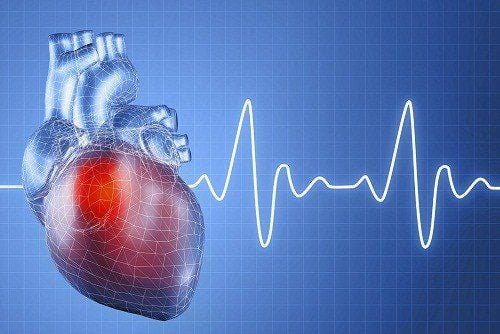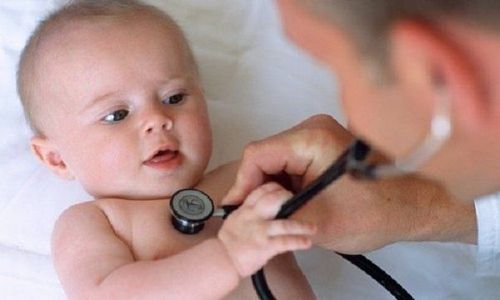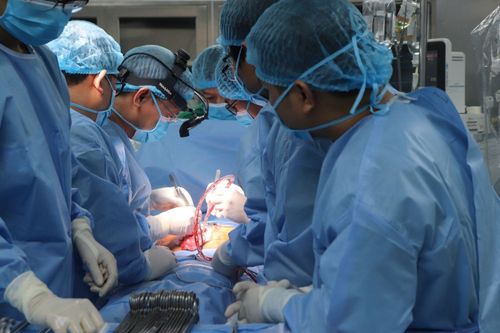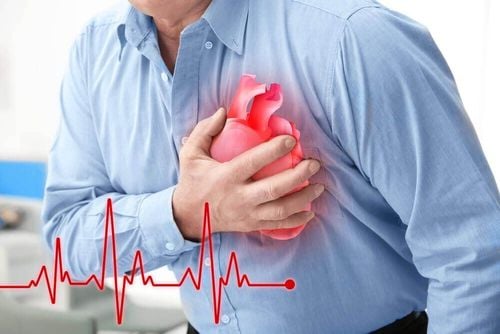This is an automatically translated article.
The article was consulted with Dr. Nguyen Luong Tan - Head of Cardiology Department - Cardiovascular Center - Vinmec Central Park International General Hospital.Currently, mitral valve disease is one of the most common cardiovascular diseases. The disease seriously affects the function and activity of the heart, causing dangerous consequences for the patient's health, and can even cause death after many years if not treated promptly. With the development of medicine, many patients with mitral valve disease have turned to surgery to improve their condition. Post-operative recovery is a very important step in the treatment process.
1. What is mitral valve disease?
Mitral valve is a heart valve located between the left atrium and the left ventricle. Its main function is to control the one-way blood flow from the left atrium to the left ventricle, then the blood will flow through the aortic valve to nourish all organs in the body.
Mitral valve disease occurs when the mitral valve located between the left heart chambers does not work as it should. These abnormalities in the mitral valve fall into two main categories:
1.1 Mitral stenosis Mitral stenosis is a condition in which the mitral valve becomes thickened and stiff, unable to close the leaflets properly. When the gate of the mitral valve does not open completely, the amount of blood flowing from the left atrium to the left ventricle is reduced and blood will be stagnant in the pulmonary circulation and right heart. Depending on the disease condition, each patient will have a different treatment method for mitral valve stenosis, in case of need, the doctor may appoint a heart valve replacement surgery for the patient.
1.2 Mitral regurgitation Mitral regurgitation is a heart disease where the leaflets cannot close tightly, causing blood to back up from the left ventricle into the left atrium. If not detected and treated promptly, patients can experience serious heart damage problems. The main cause of mitral regurgitation is usually the valve prolapse - the valve is pushed back into the left atrium.
In addition, mitral stenosis and mitral regurgitation exist in 3 other forms, namely simple mitral stenosis, simple mitral regurgitation, or a combination of stenosis and mitral regurgitation.
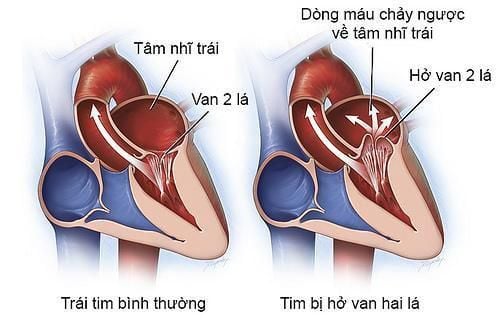
Hở van hai lá là bệnh lý về tim khi các lá van không thể đóng chặt lại được
2. Causes of mitral valve disease
Some of the main causes of mitral valve disease include:
Congenital heart disease Trauma Consequences of myocardial infarction Arthritis-complications from Streptococcus infection Mitral regurgitation due to prolapse Disease mitral regurgitation leads to secondary mitral regurgitation Rheumatic heart disease due to infective endocarditis Degenerative The degree of progression and prognosis of mitral valve disease will depend on:
Condition of the mitral valve, such as: eg, valvular stenosis, valvular regurgitation or a combination of stenosis, regurgitation The degree of mitral valve damage Duration of the disease and other lesions.
3. Signs and symptoms of mitral valve disease
Like tricuspid valve disease, many cases of mitral valve disease show no specific signs or symptoms in the early years. When the disease is more advanced, the patient often has the following symptoms:
The body is often tired Ankle edema Irregular heartbeat When exercising vigorously or when lying down, it will be difficult to breathe Appear murmur - irregular heartbeat often. If you have any of the symptoms listed above, it's very likely that you have problems with your heart valves. Ideally, you should visit your doctor as soon as possible for a timely diagnosis and treatment.
4. Methods of diagnosis and treatment of mitral valve disease
4.1 Diagnostic methods of mitral valve disease To diagnose the condition and extent of damage of mitral valve disease, the doctor may ask the patient to perform the following diagnostic tests:
Echocardiography: Through the ultrasound image, the doctor can see the accompanying pulmonary pressure and clearly observe the heart valves as well as their activity Electrocardiogram (ECG): Helps the doctor to easily detect the syndrome enlarged heart chambers, abnormal atrial fibrillation, and heart disease. Chest X-ray: A method to help determine the size of the heart and help indicate some heart valve diseases. Besides, this method is also useful in determining the condition of the lungs. Cardiac Magnetic Resonance Imaging (MRI): This method typically uses a magnetic field and sound waves to create detailed images of the heart, thereby helping doctors determine how advanced the disease is. Physical test and neuropsychological test: Apply different tests to help measure endurance and check the heart's response to physical activities. In cases where the patient is unable to exercise, the doctor may prescribe medications that have the same effect on the heart as exercise. 4.2 Treatment methods for mitral valve disease Based on the condition and extent of the disease, each patient will have different treatment methods.
Mitral valve repair surgery: This is a surgical method that helps to preserve the valve and its function.
Mitral valve replacement surgery: In cases where the mitral valve cannot be repaired, the doctor will choose the patient's heart valve replacement surgery by removing the damaged valve and replacing it with a heart valve. In the case of biological valve replacement, it will degrade over time and need to be replaced. When a prosthetic valve is replaced, the patient needs to take anticoagulants to avoid blood clots.
5. Problems patients may have after mitral valve surgery

Người bệnh sẽ mất khoảng 6-8 tuần để có thể hồi phục hoàn toàn sau khi thực hiện phẫu thuật thay van
Patients will take about 6-8 weeks to fully recover after performing valve replacement surgery. Over time, you may experience the following problems:
Loss of appetite, nausea for about 2-4 weeks Chest pain in the area around the incision Fluctuating mood, mood swings, sometimes feeling Suppression or mild depression Feeling of itching and numbness in the surgical scar can last up to 6 months Constipation Insomnia or midnight awakening Shortness of breath Hands are weak for the first 1 or 2 months Neither are you nor your family should be overly concerned as these are common symptoms after heart surgery and should improve over time.
6. Recovery after mitral valve surgery
Some things that patients and families need to keep in mind to help the recovery process become faster after mitral valve surgery, including:
6.1 Limit visits to patients after surgery A few hours after surgery , relatives should limit visits to avoid the risk of infection.
6.2 Practice coughing and deep breathing Patients should practice coughing after surgery to reduce congestion in the lungs, helping to reduce the risk of pneumonia and fever. Coughing does not affect the incision as well as the bridge at the heart. To make coughing easier, you can place a pillow under your back.
6.3 Change lying position You should change your lying position often and turn over continuously to help the recovery process become faster. When sleeping, you should lie on your side and change positions every few hours.
6.4 Eating liquid foods After the endotracheal tube is removed, you can eat liquid foods such as porridge or soup.
6.5 Light exercise 2 days after surgery, you should sit up and walk around the room, take a short walk in the hallway to prepare for discharge. However, for 6-8 weeks after surgery, you should not lift or pull anything heavier than 50 pounds. This can put pressure on the healing incision and give the breastbone not enough time to heal.
6.6 Body hygiene Immediately after surgery, you can wipe your body. After a few days, you can shower and wash your hair.
6.7 Dressing The incision is moderately bandaged for ventilation, drying, and skin-to-skin contact. The incision can be removed after a week of surgery.
6.8 Regular follow-up After being discharged from the hospital within the first 3 months, you should have regular check-ups to check on your health status and medication regimen. After that, you should check back about twice a year to check if your health is really stable or not.
6.9 Diet After surgery, you need to limit your intake of foods with a lot of salt such as melons, salted eggplants, dried fish, fast food, canned foods, .. Meals need to be full of necessary nutrients. with a balanced ratio between meats, vegetables, tubers and fruits.
6.10 Physical activity Regular exercise improves your cardiovascular health and overall well-being. However, you should avoid vigorous activity, and instead do gentle and moderate exercise exercises such as walking, cycling, ... After a few weeks of surgery, you can walk about 3-4 km per day. day.
6.11 Go to the hospital when there are warning signs After surgery, if you see complications such as chest tightness, shortness of breath, dizziness, dizziness, unconsciousness, weakness in limbs, .. then you should Immediately go to the hospital for treatment.
Heart surgery when indicated will quickly recover, so patients with mitral heart disease need to be examined early for diagnosis and treatment. Vinmec successfully operated on mitral valve disease and gave high treatment efficiency.
Please dial HOTLINE for more information or register for an appointment HERE. Download MyVinmec app to make appointments faster and to manage your bookings easily.




